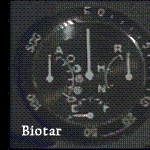Isn't it time for a new 1,4 / 75mm lens.
-
Recently Browsing 0 members
- No registered users viewing this page.
-
Similar Content
-
- 2 replies
- 173 views
-
- 63 replies
- 4,232 views
-
- 25 replies
- 11,254 views
-
- 230 replies
- 38,242 views
-
- 27 replies
- 2,473 views
-






Recommended Posts
Join the conversation
You can post now and register later. If you have an account, sign in now to post with your account.
Note: Your post will require moderator approval before it will be visible.